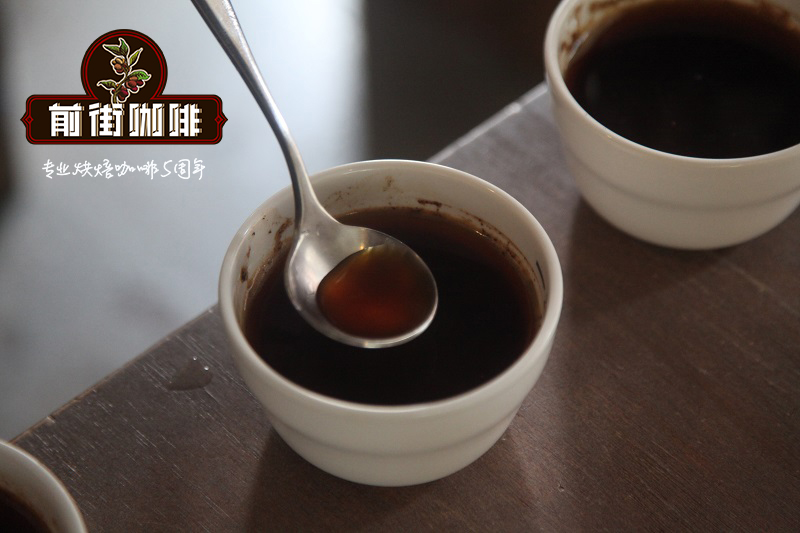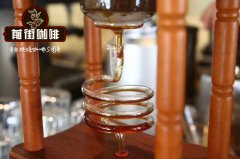What are the growth characteristics of coffee trees? What are the characteristics of maturity? What is the growth time?

Professional coffee knowledge exchange more coffee bean information please follow the coffee workshop (Wechat official account cafe_style)
What are the growth characteristics of coffee trees? What are the characteristics of maturity? What is the growth process like?
One of the characteristics of a coffee tree is that its fruit can bear fruit several times a year, and another is that flowers and fruits (also known as cherries) coexist at different stages of ripening.
The style of the whole coffee industry is influenced by the fickle nature. If the fruit is too ripe, the beans in it will rot.
If it is not ripe enough, the beans picked will not ripen by themselves. So bean pickers often go back to the same tree several times to look for ripe fruit-trying to get only 2 pounds of green coffee beans, usually an average of 2 pounds a year. Keep this in mind the next time you buy coffee.
Coffee farmers who produce low-grade coffee beans like to use labor-saving methods to harvest beans, but in this way, because the quality is not pure, it impairs the flavor of coffee and lowers the grade of coffee. The way to pick coffee beans in some parts of Africa is to shake coffee trees, shake the fruit off the ground, and pick it up from the ground before the fruit is injured and rotten.
Secondary coffee is produced in most parts of Brazil, where coffee is picked by plucking all the leaves, flowers, overheated and green fruits from the branches at a time, and it takes two years for such damaged coffee trees to return to normal.
The delicate white flowers of coffee trees are a rare spectacle, which smells like oranges and jasmine. Sometimes it is just a tree blooming alone; for example, a young bride, sometimes the whole coffee garden is in full bloom, looking like a sea of white flowers, beautiful and intoxicating, but the flowering period is fleeting. Within two or three days, the petals dispersed with the wind, leaving only the remaining fragrance to spin around in the air.
Before long, small fruits appeared in piles, first green, then yellow, then red and tapestry red. When they were almost black, they could be harvested in Jamaica. Bats were the first to know whether the fruit was ripe or not. They sucked coffee pulp at night, telling farmers that the fruit was ripe and ready to be harvested. The oval fruit gathers tightly around the branches, with slender, smooth dark green toothed leaves on both sides of the branches. The leaves on the sunny side are harder and the back is softer and paler, and the edges are fan-shaped. The branches are also opposite from the trunk.
Evergreen trees are usually bred in a nursery, grow into seedlings, and then move to a coffee farm a year later, in full compliance with the way the early Arabs planted and cultivated coffee trees. In the first four or five years of its growth, the coffee tree will continue to take root downward, develop its trunk upward, and develop its branches into an umbrella shape so that it can bear rich fruit in the future.
Important Notice :
前街咖啡 FrontStreet Coffee has moved to new addredd:
FrontStreet Coffee Address: 315,Donghua East Road,GuangZhou
Tel:020 38364473
- Prev

What is the relationship between altitude and sour taste? What are the advantages of coffee beans grown at high altitude? What reason does altitude determine?
Professional coffee knowledge exchange more coffee bean information please follow the coffee workshop (Wechat official account cafe_style) the relationship between altitude and sour taste? What are the advantages of coffee beans grown at high altitude? What factors does altitude determine? We have taken you to learn more about coffee trees from a botanical point of view. Now, let's talk about what kind of environmental conditions, the health of coffee trees.
- Next

What is the ideal growing environment for coffee trees? How to plant coffee trees?
Professional coffee knowledge exchange more coffee bean information please pay attention to the coffee workshop (Wechat official account cafe_style) what is the ideal growing environment for coffee trees? How to plant coffee trees? There are three main commercial varieties of coffee trees, and there are different classifications under these three varieties. Arabica (arabica) coffee is the most important and best quality coffee bean.
Related
- Detailed explanation of Jadeite planting Land in Panamanian Jadeite Manor introduction to the grading system of Jadeite competitive bidding, Red bid, Green bid and Rose Summer
- Story of Coffee planting in Brenka region of Costa Rica Stonehenge Manor anaerobic heavy honey treatment of flavor mouth
- What's on the barrel of Blue Mountain Coffee beans?
- Can American coffee also pull flowers? How to use hot American style to pull out a good-looking pattern?
- Can you make a cold extract with coffee beans? What is the right proportion for cold-extracted coffee formula?
- Indonesian PWN Gold Mandrine Coffee Origin Features Flavor How to Chong? Mandolin coffee is American.
- A brief introduction to the flavor characteristics of Brazilian yellow bourbon coffee beans
- What is the effect of different water quality on the flavor of cold-extracted coffee? What kind of water is best for brewing coffee?
- Why do you think of Rose Summer whenever you mention Panamanian coffee?
- Introduction to the characteristics of authentic blue mountain coffee bean producing areas? What is the CIB Coffee Authority in Jamaica?

